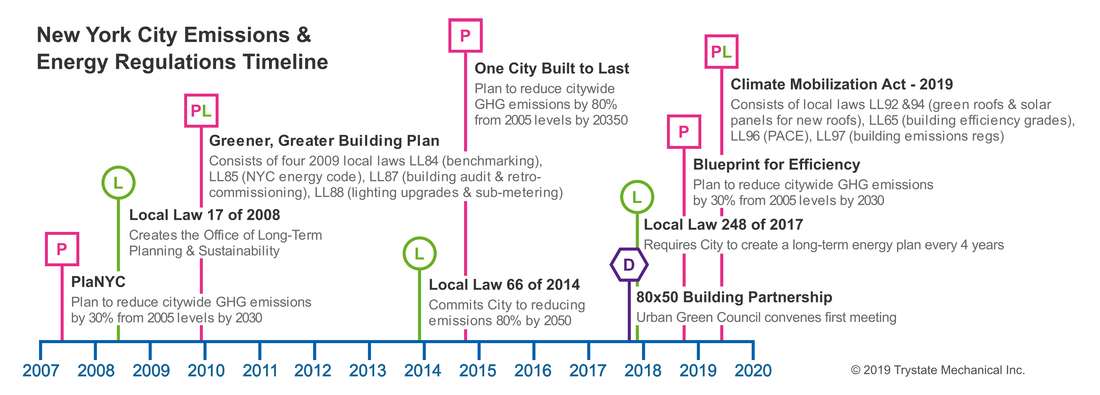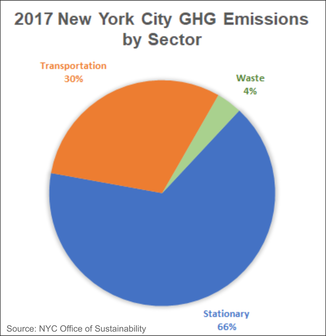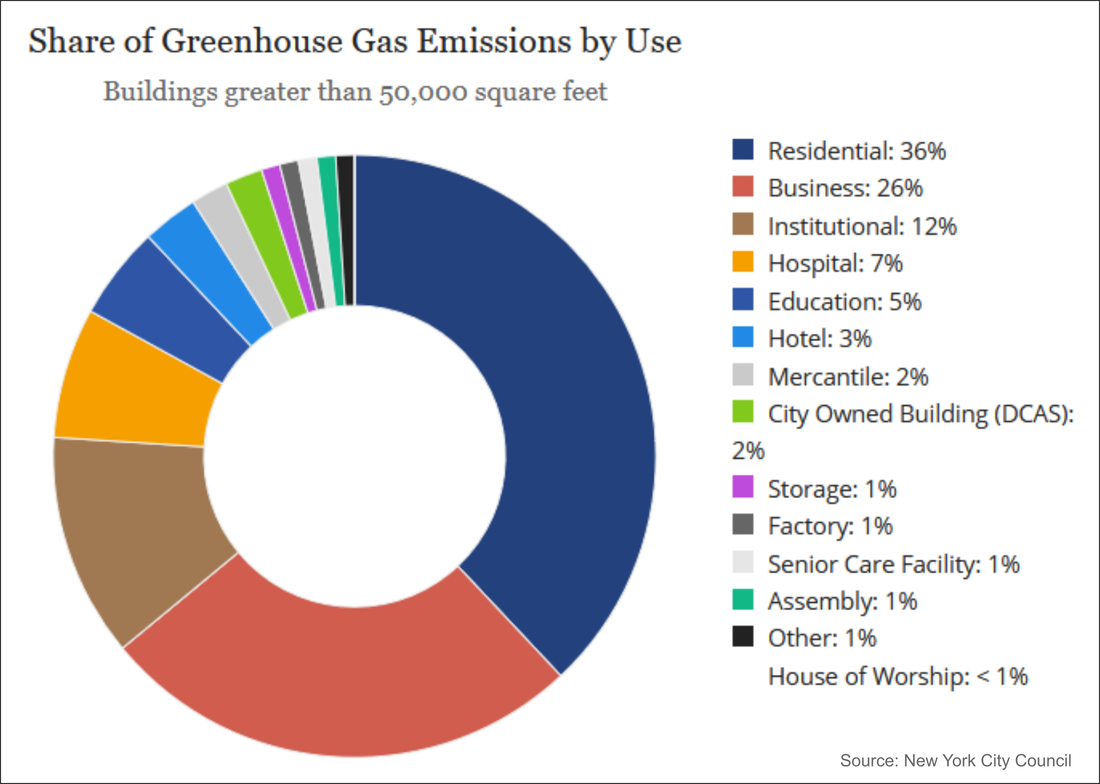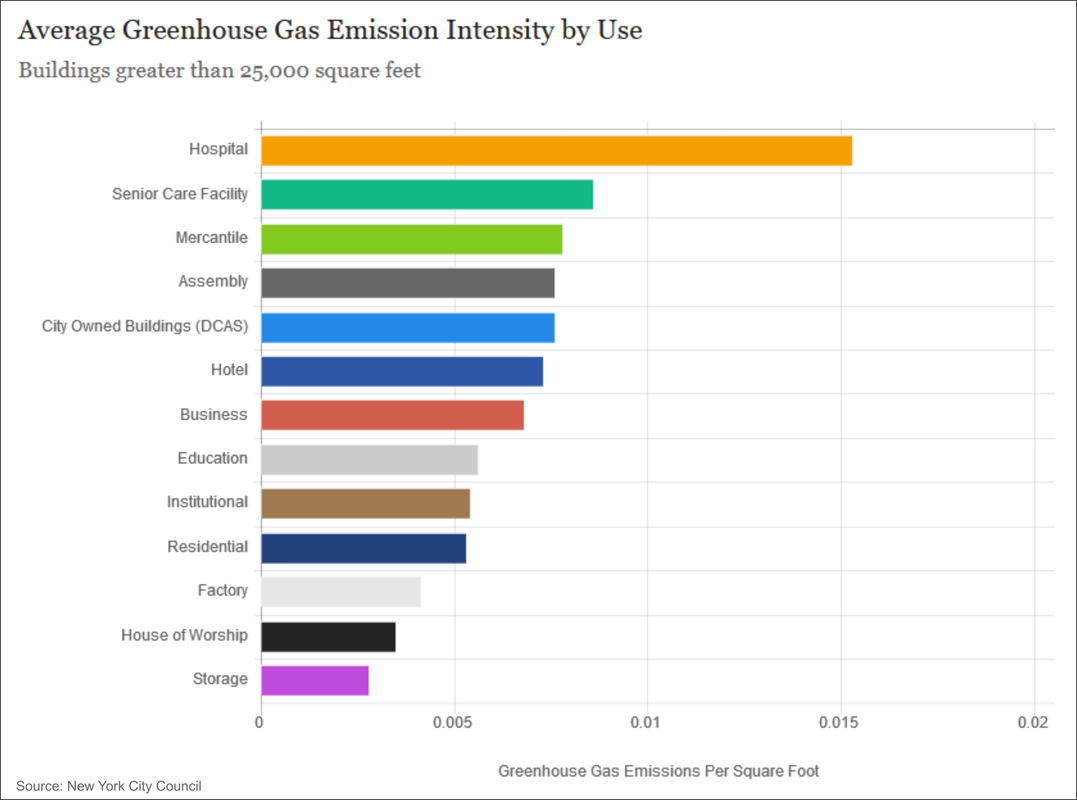New York City Building Emissions & Energy Regulations: Historical
NYC Building Emissions History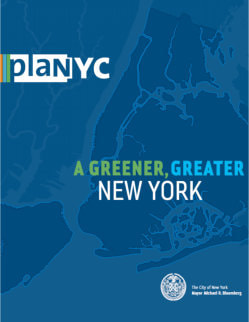
NYC Energy & Emissions Regulations: How did we get here?
The New York [State] Consolidated Laws include a statutory code called the “Energy Law.” The New York Energy Law is the statutory, regulatory, and common law of the State of New York concerning the policy, conservation, taxation and utilities involved in energy, which became effective on July 26, 1976 as Chapter 17-A of the Consolidated Laws. This law also permits local municipalities, such as New York City, to adopt their own energy codes as long as such codes are more stringent than the Energy Law. PlaNYC New York City's first building emissions policy was rolled out on Earth Day in 2007. PlaNYC was an ambitious agenda to improve New York City’s physical infrastructure, environment, quality of life, and economy by supporting ten key goals including a reduction in citywide greenhouse gas (GHG) emissions by 30 percent (from a 2005 baseline) by 2030. The followup to PlaNYC was the passage of Local Law 17 in 2008. LL17/2008 amended the City's administrative code to create an an Office of Long-Term Planning and Sustainability reporting to the Mayor and responsible for issuing its first report and recommendations by April 22, 2011 and every four years thereafter. Greener, Greater Buildings Plan In 2009, New York City established its own building energy regulations included in the passage of a set of Local Laws 84, 85, 87 & 88 collectively known as the “Greener, Greater Buildings Plan”. Local Law 84 of 2009 is something of landmark legislation as it plays a central role in the City's current building emissions regulations. LL84/2009 added to the administrative code the requirement for certain buildings to be benchmarked in regard to their energy consumption and water usage. This groundbreaking requirement required buildings over 50,0000 sf to report their energy and water consumption every year. Eventually, this would become an annual requirement for buildings over 25,000 sf. Local Law 85 of 2009 is also an historical piece of legislation. LL85/2009 amended the City administrative code by establishing an energy code for New York City. This code known as the New York City Energy Conservation Code or “NYCECC” consisted of the New York State energy code plus the local laws regarding energy (and emissions) put in place by the City. NYC Local Law 87 of 2009 further defined and expanded building energy requirements. LL87/2009 put in place requirements for certain buildings to undergo professional energy audits and retro-commissioning of what it calls "base building systems" and similar requirements for certain city-owned buildings. NYC Local Law 88 of 2009 (LL88/2009) amended the New York City administrative code regarding requirements for buildings to upgrading lighting systems and the installation of sub-metering in certain buildings. One City Built to Last In 2014, the City issued another paper, One City Built to Last, describing its plans to address its response to environmental change. Also in 2014, the passage of Local Law 66 (LL66/2014) committed the City to reducing greenhouse gas emissions beyond those spelled out in PlaNYC and LL17/2008. Besides reducing the City's greenhouse gas emissions 30% by 2030, LL66/2014 added a new target of reducing citywide GHG emissions 80% by 2050. These actions ultimately lead to the development of another plan, New York City’s Roadmap to 80x50. New York City’s Roadmap to 80x50 The year of 2016 saw the passage of Local Law 133 (LL133/2016) which changed the building energy and water benchmarking requirement of LL84/2009 from buildings over 50,000 sf down to buildings over 25,000 sf. This move nearly doubled the number of New York City buildings required to be benchmarked from roughly 11,000 to more than 20,000. 2016 also saw the issuance of another emissions & energy plan, New York City’s Roadmap to 80x50. This plan increased the GHG emissions reduction schedule from 30% to 40% reduction by 2030 and provide more details for achieving the 80% reduction by 2050. Blueprint for Efficiency To develop specific actions for the realization of the Roadmap to 80X50, the Urban Green Council organized what they called the "80x50 Building Partnership". The partnership was made up of various working groups consisting of representatives from more than 40 organizations. The purpose of the partnership was to address the challenge of costs, technological feasibility, health impacts, industry expertise, state policy and more. Ultimately, major elements of the Blueprint ended up being codified into Local Law 97 of 2019 which with some other local laws became known as the Climate Mobilization Act (CMA), the current emission and energy regulations for New York City. |
Local Law 97 Building Emissions RegsReducing emissions from buildings is a major step towards reducing greenhouse gas (GHG) emissions throughout New York City. Energy consumption in buildings is responsible for more than 60% of the City's GHG emissions as shown in the following.
- Stationary energy is that used by buildings and other stationary sources, as well as fugitive emissions from natural gas distribution within city limits.
- Transportation is on-road conveyance, railways, marine navigation, and aviation within city limits. - Waste is wastewater treatment within city limits, and solid waste generated within the city. Buildings don't produce emissions equally. The chart above shows emissions based on the total floor space in the City by type of building. The chart below shows how building use can effect emissions. For example, hospitals operate 24/7/365, require careful control of lighting and HVAC and utilize many energy-intensive systems.
|

